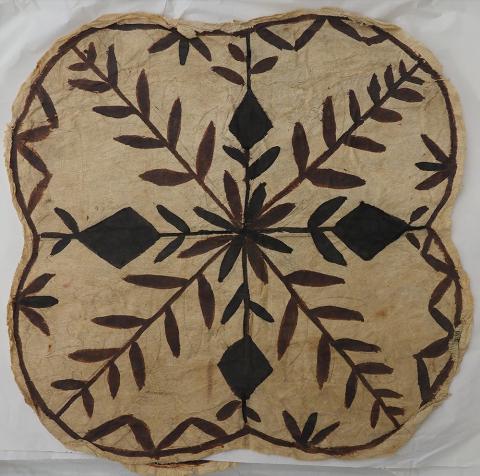Across the Pacific Ocean and around the world, many native traditions draw inspiration from the natural world to create art. In the Samoan islands of Oceania, one such art form is called siapo, a form of bark cloth that’s painted with patterns resembling the local flora and fauna. The production starts when bark from a young paper mulberry tree (around a year old) is stripped from the tree’s stalk. This process can be done either with a very sharp knife or with one’s teeth. The bark is then soaked in fresh water to keep it malleable. Next, the bark is scraped to remove any further impurities with clam shells. Three different shells are used for this process, depending on the desired smoothness of the cloth. From there, the scraped bark is pounded flat with an i’e wooden mallet and a tutua wooden anvil. Before it’s painted, the cloth is dried, stretched, and flattened. Typically, multiple sheets are glued onto each other with a natural adhesive in order to resist tearing. The painting is done in two primary ways. Siapo ‘elei are siapo cloths that have their pattern applied with a pattern board. These boards, called ‘upeti, were originally made from coconut fiber, or fala, but with the introduction of metal tools into Samoa, ‘upeti boards began to be made out of wood. These boards are called ‘upeti la’au. Siapo mamanu refers to siapo that has been painted by hand. The brushes used for such painting are traditionally made from pandanus fruit leaves. Regardless of if the artist is applying the pattern by hand or by ‘upeti board, smaller designs are always done freehand as siapo mamanu.
The dyes used to paint siapo are created from natural plants in Samoa. The primary dyes are brown, black, yellow, and red. Siapo cloth is used for anything from clothing to room dividers to ceremonial implements. Motifs and iconography on these siapo cloths are all drawn from nature. These designs are abstract and geometric, sometimes having the siapo cloth divided into separate sections for each motif. Siapo mamanu typically allows for more curved lines, as it's harder to carve those designs into a board. Another key part of the overall composition of a siapo cloth’s design is balance. No one section can have too much or too little design compared to the piece as a whole. These two factors may seem quite limiting on the art form, but each artist is free to combine patterns, dyes, and methods as they see fit. This forms a very uniform style broadly, but each individual cloth is given uniqueness based on the artist’s choice in these constraints. Recently, more patterns have been being used referring to Samoan cultural practices and written words, which others have fallen out of favor, such as worm or centipede designs.
Up until the 20th century, siapo cloth was only dyed with three colors maximum. These made pieces mostly different shades of brown or black, as the traditional dyes only darkened the bark cloth to varying degrees. The first artist who was credited with adding more color to their works was Kolone Fai’ivae Leoso (1900-1970). She was inspired by a church’s stained glass windows, and that helped spark her siapo art creativity with new ideas. These multicolored siapo cloths are now considered the “Leone style,” as the Leone group in Samoa is where Leoso was from. Her work was carried on by Mary Pritchard (1905-1992) who was a huge advocate for the continued teaching of siapo art. Thanks to Pritchard, siapo production and decoration is now being taught as a part of art programs in Samoan schools, which also is helping break down the traditional gender barrier so that both men and women can make their own siapo. Leoso and Pritchard’s efforts have helped preserve the art of siapo in Samoa and inspired further generations to innovate with new ideas in their traditional art’s designs.
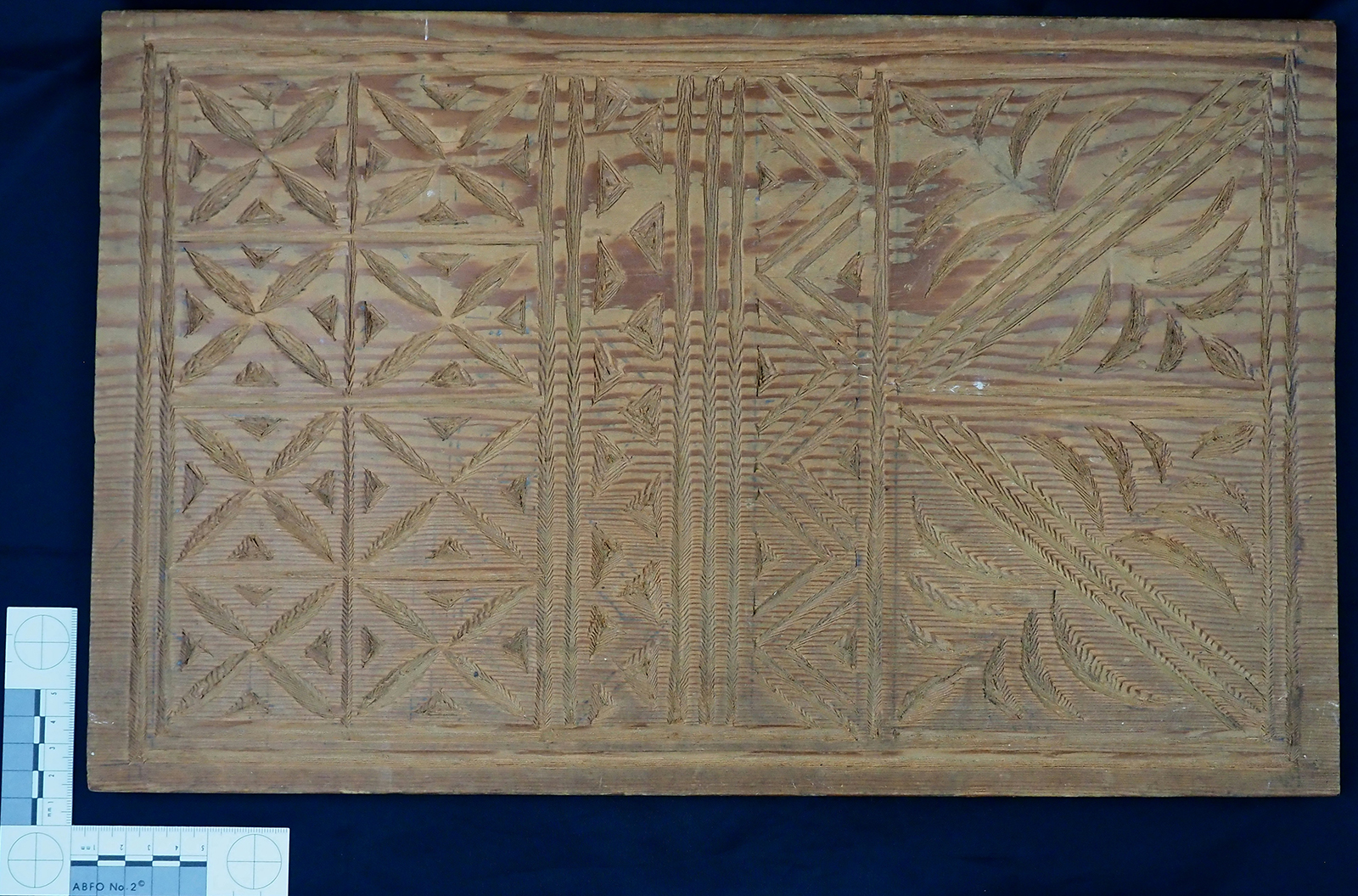
1983-0257
Tapa Board
wood
Samoa, Oceania
1960s
Wood board, rectangular, with carved design
This ‘upeti board has geometric patterns carved all over its rectangular surface.
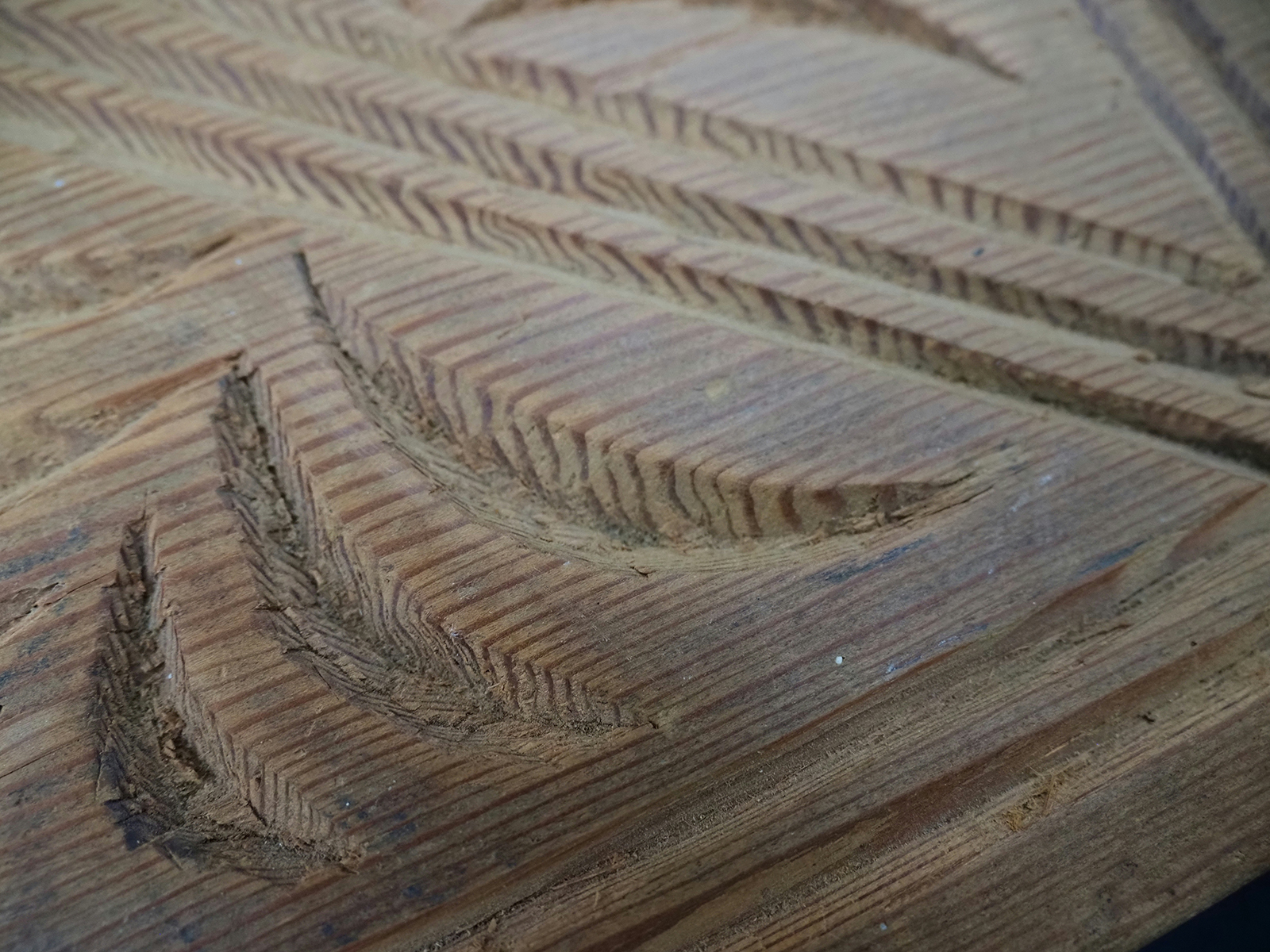
Close up of siapo board 1983-0257
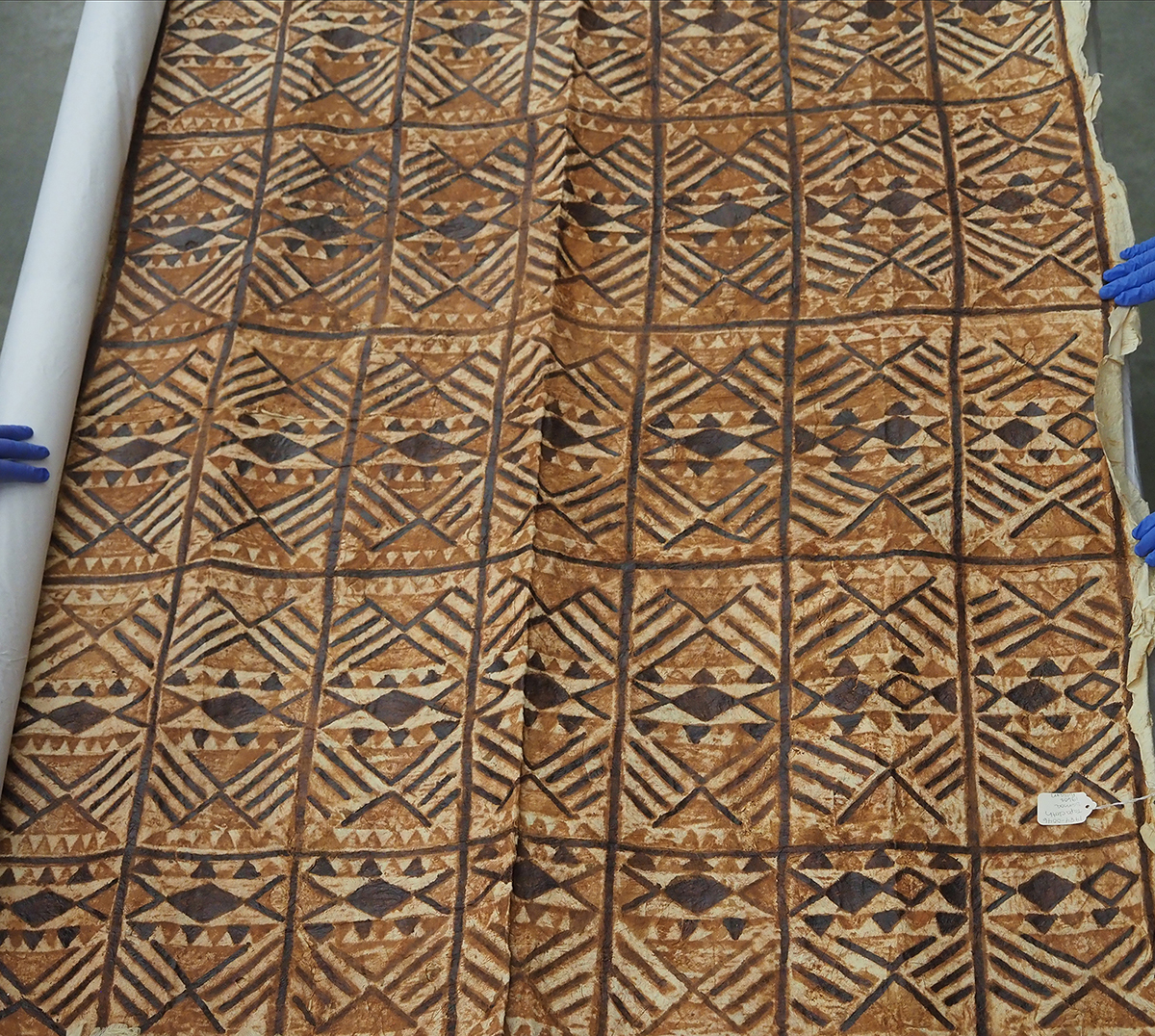
1984-0046
Siapo ‘elei
Bark cloth
Samoa, Oceania
1960s
Rectangular; undecorated border. 35 pattern “squares,” all with the same basic design. Two layers separate in undecorated border.
This siapo shows the repeating, uniform design of siapo ‘elei in its 35 squares. Still, the smaller details are done by hand, as seen with the sets of four diagonal lines not quite being the same on each repeat section.
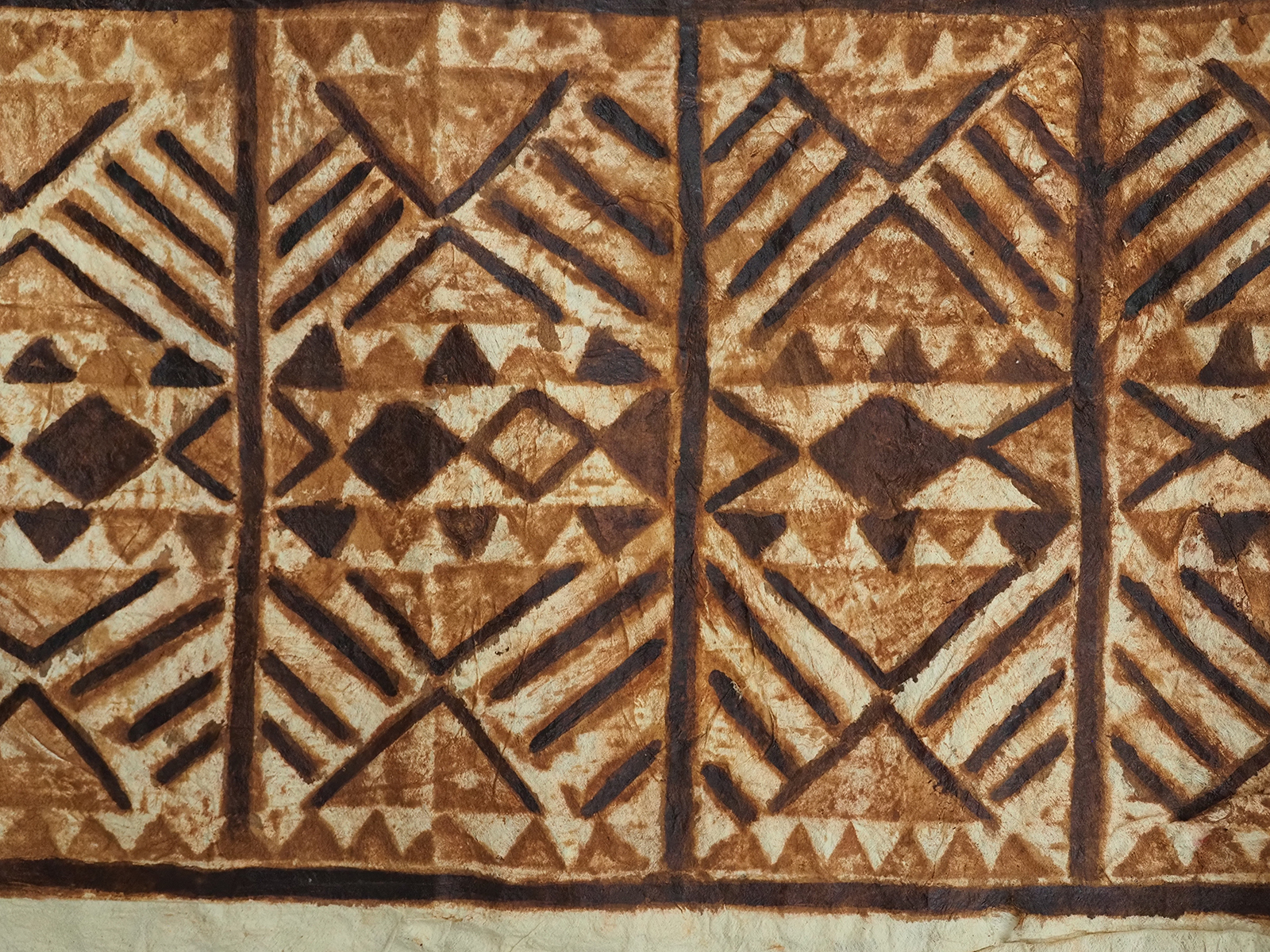
Close up of siapo 1984-0046
The variation in hand-painted areas of the siapo can be seen in the smaller design elements within each rectangle section.
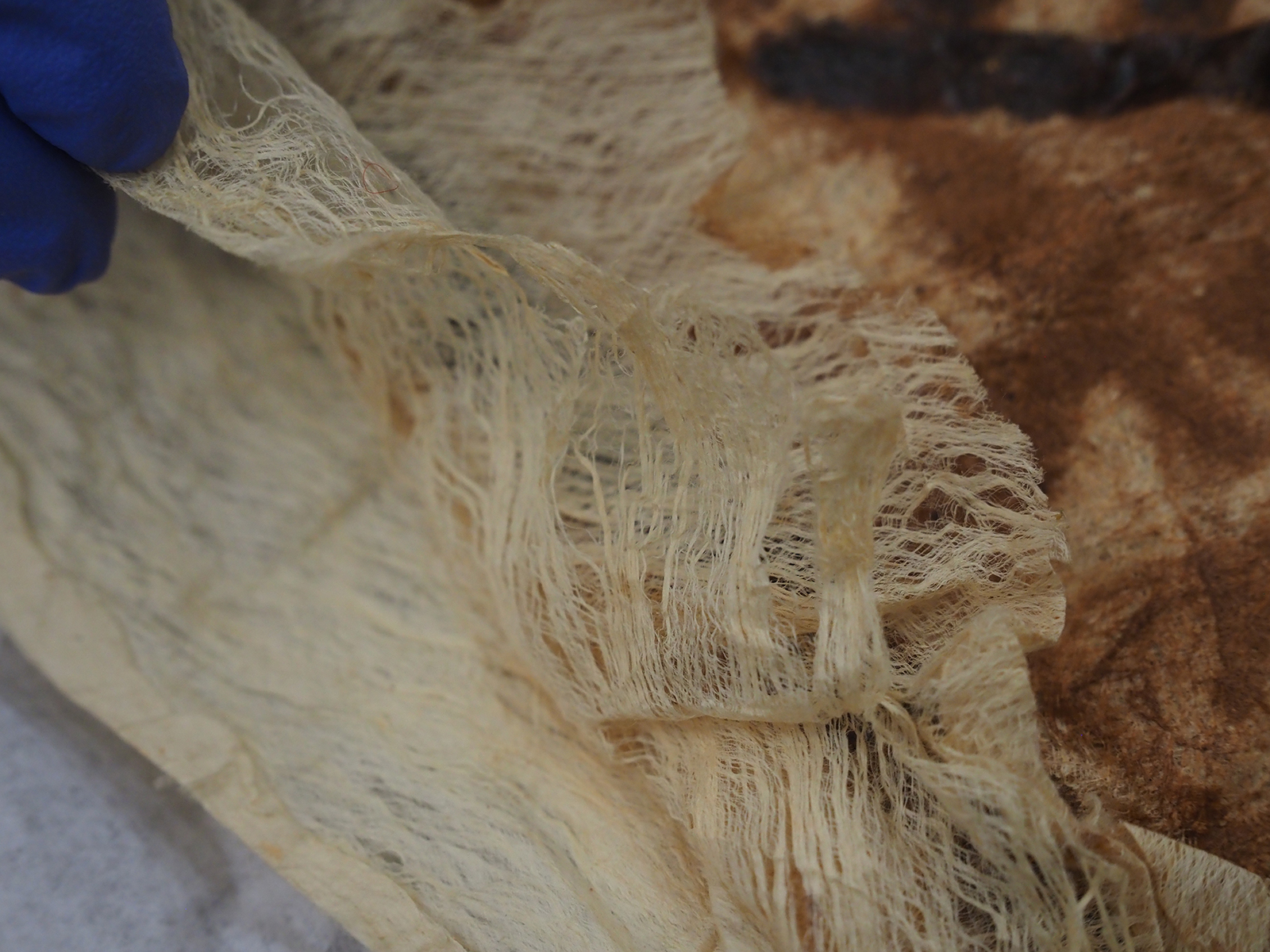
Close up of siapo 1984-0046
The multiple layers of bark cloth can be seen separating on the edges of this siapo art, showing the individual plant fibers as well.
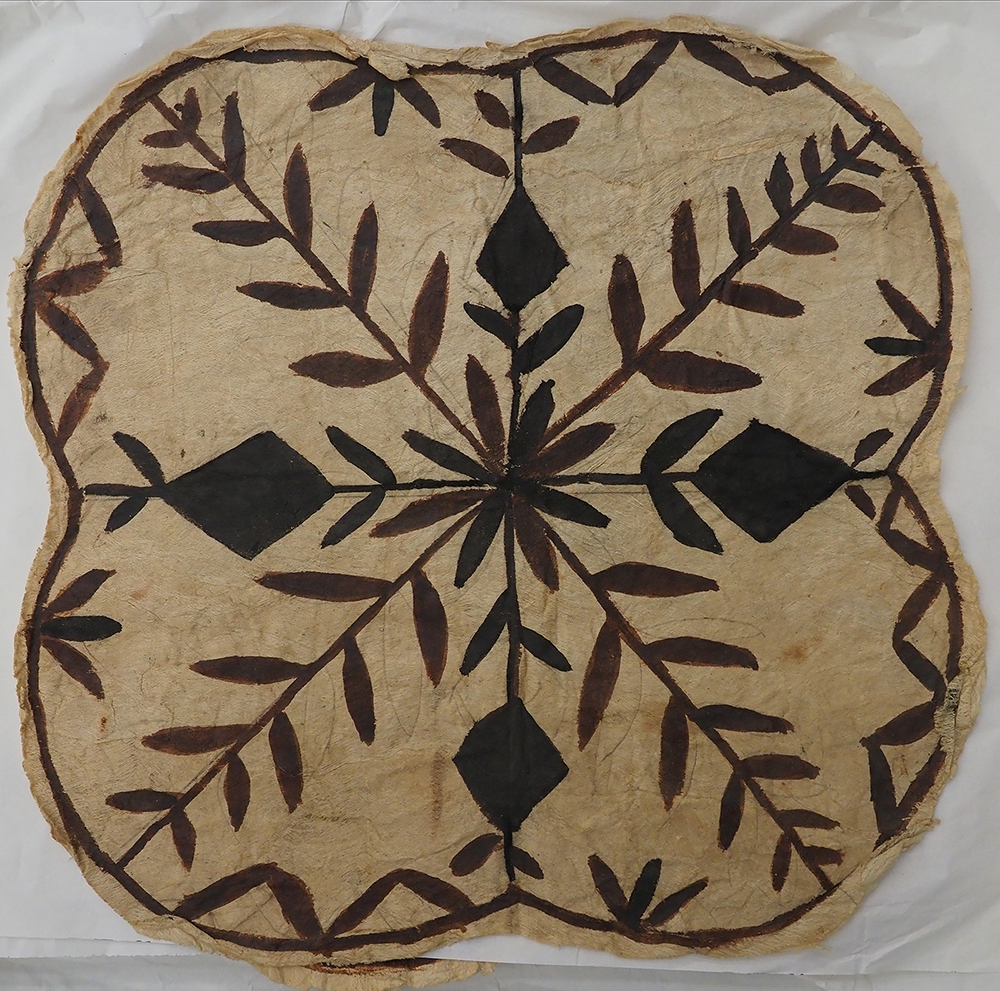
2005-03-014
Siapo mamanu
Bark cloth
Samoa, Oceania
1960s
Siapo cloth with designs in brown and black (flower, diamond, vine shapes).
This siapo mamanu shows the overall idea of balance and natural imagery in traditional siapo art. No one section is denser than another and the use of only two dyes indicates that this is more of a traditionally styled cloth.
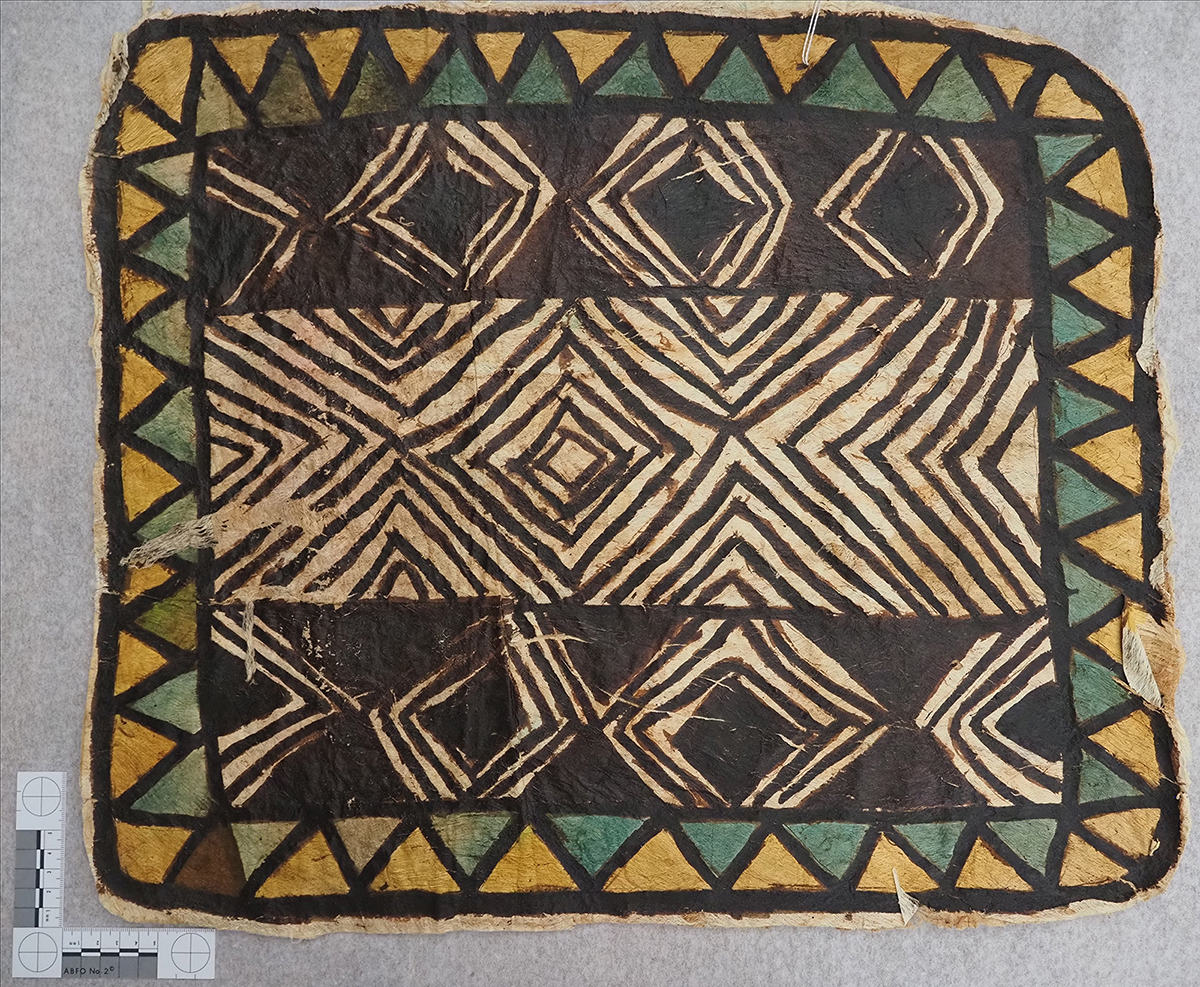
1984-0036
Siapo mamanu
Bark cloth
Samoa, Oceania
1960s
Rectangular with rounded corners; geometric design in brown with yellow and blue-green on border.
This siapo mamanu uses the newer Leone style, as there are multiple vibrant colors mixed into its design rather than the traditional reds and browns.
REFERENCES
Pritchard, M. J. (1984). Siapo: Bark Cloth Art of Samoa. American Samoa, Council on Culture, Arts and Humanities.
Sowell, T. L. (2007). Innovative Tradition: Reshaping the Samoan Art of 'Siapo' (Decorated Barkcloth). Pacific Arts, 74–87.
